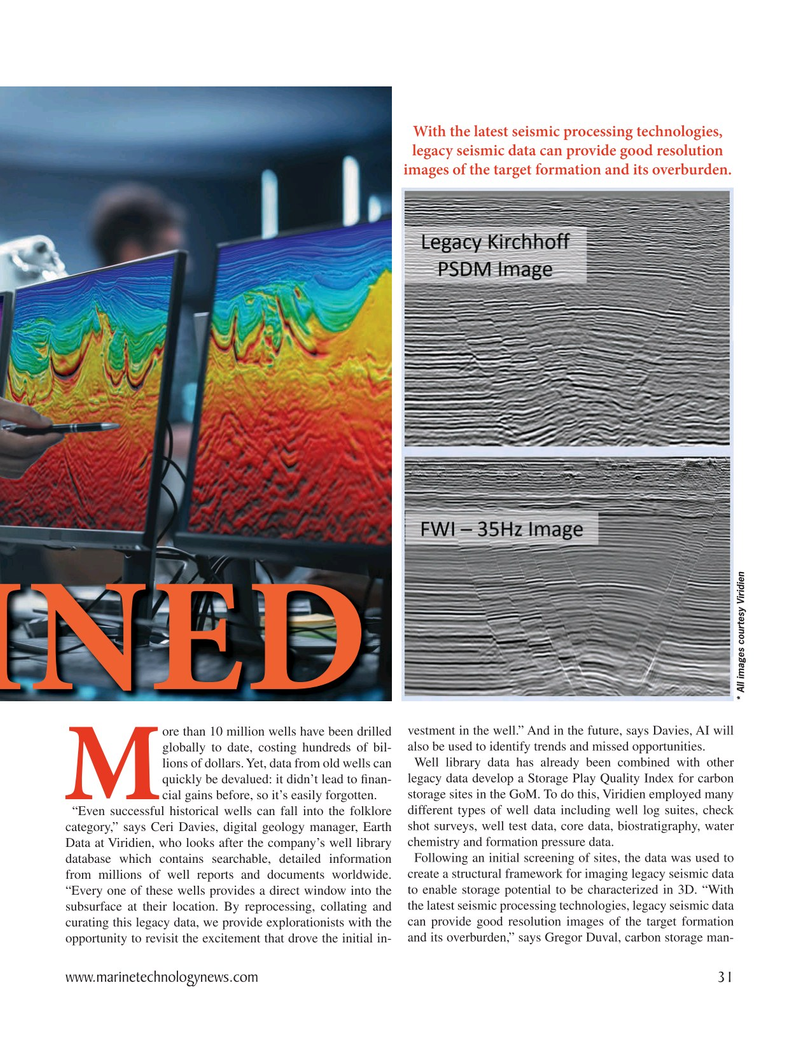
Page 31: of Marine Technology Magazine (March 2025)
Read this page in Pdf, Flash or Html5 edition of March 2025 Marine Technology Magazine
With the latest seismic processing technologies, legacy seismic data can provide good resolution images of the target formation and its overburden.
RE-IMAGINED * All images courtesy Viridien ore than 10 million wells have been drilled vestment in the well.” And in the future, says Davies, AI will globally to date, costing hundreds of bil- also be used to identify trends and missed opportunities.
lions of dollars. Yet, data from old wells can Well library data has already been combined with other leg- quickly be devalued: it didn’t lead to fnan- acy data to screen for carbon storage sites in the GoM. To
Mcial gains before, so it’s easily forgotten. do this, Viridien employed many different types of well data “Even successful historical wells can fall into the folklore as part of a Storge Play Quality Index assessment including category,” says Ceri Davies, digital geology manager, Earth well log suites, check shot surveys, well test data, core data,
Data at Viridien, who looks after the company’s well library biostratigraphy, water chemistry and formation pressure data.
database which contains searchable, detailed information Following an initial screening of sites, the data was used to from millions of well reports and documents worldwide. create a structural framework for imaging legacy seismic data “Every one of these wells provides a direct window into the to enable storage potential to be characterized in 3D. “With subsurface at their location. By reprocessing, collating and the latest seismic processing technologies, legacy seismic data curating this legacy data, we provide explorationists with the can provide good resolution images of the target formation opportunity to revisit the excitement that drove the initial in- and its overburden,” says Gregor Duval, carbon storage man- www.marinetechnologynews.com 31

 30
30

 32
32
